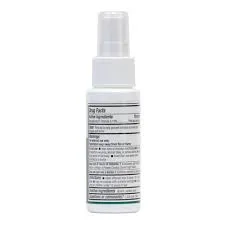Formulation and Applications of Diethylene Triamine Penta Methylene Phosphonic Acid in Industry
Diethylene Triamine Penta (Methylene Phosphonic Acid) An Overview
Diethylene Triamine Penta (Methylene Phosphonic Acid), often referred to as DTPMPA, is an organic compound that plays a critical role in various industrial applications due to its unique chemical properties. This phosphonic acid derivative is primarily recognized for its capacity to chelate metal ions, making it an important agent in water treatment, detergent formulation, and industrial cleaning processes. The significance of DTPMPA stems from its ability to stabilize and sequester metal ions, thereby preventing unwanted reactions such as precipitation or scaling in aqueous solutions.
Chemical Structure and Properties
The chemical formula of DTPMPA is C12H30N3O15P5, which reflects its complex structure containing multiple phosphonic acid groups. These groups, characterized by their -PO3H2 functional unit, are responsible for the compound's high affinity for metal ions. The presence of both amine and phosphonic acid functionalities in DTPMPA contributes to its unique chelating abilities, allowing it to form stable complexes with metals such as calcium, magnesium, and iron.
DTPMPA is a white crystalline powder that is soluble in water, which facilitates its application in aqueous environments. Its pH is typically neutral to slightly acidic, which makes it compatible with a variety of formulations across different pH ranges. The stability of DTPMPA in diverse conditions further enhances its utility in industrial settings.
Applications
1. Water Treatment DTPMPA is extensively used in water treatment processes. Its ability to sequester calcium and magnesium ions allows it to inhibit scale formation in boilers, cooling towers, and other industrial equipment. Scaling can lead to significant efficiency losses and costly maintenance, so the use of DTPMPA helps to mitigate these issues, resulting in improved operational performance and lower overall costs.
diethylene triamine penta methylene phosphonic acid

2. Detergents and Cleaners In the formulation of detergents and cleaning agents, DTPMPA serves as a powerful chelating agent. It helps to enhance the effectiveness of surfactants by binding metal ions that can interfere with the cleaning process. For instance, in laundry detergents, DTPMPA prevents the precipitation of calcium carbonate, ensuring that the cleaning agents remain active and effective. This property not only improves cleaning performance but also prolongs the life of fabrics and surfaces.
3. Agricultural Applications The agricultural sector also benefits from the use of DTPMPA, particularly in the formulation of fertilizers and herbicides. By chelating essential micronutrients, DTPMPA ensures that these nutrients remain available for plant uptake, enhancing growth and yield. Furthermore, it can aid in the detoxification of heavy metals in soil, promoting healthier crop production.
4. Industrial Processes In various industrial processes, DTPMPA is utilized to prevent corrosion and scale formation in machinery and pipelines. Its ability to stabilize metal ions helps to maintain operational efficiency and extend the lifespan of equipment. Moreover, DTPMPA is effective in oilfield applications, where it helps to manage water quality and improve extraction processes.
Environmental Considerations
While DTPMPA is largely viewed as a beneficial compound, there are environmental considerations associated with its use. Phosphonic acids, including DTPMPA, can contribute to eutrophication when they enter water systems in significant quantities, stimulating excessive algae growth. Therefore, it is crucial to manage the use and disposal of DTPMPA-containing products responsibly. Regulatory bodies have established guidelines to limit the environmental impact of such chemicals, necessitating careful consideration in industrial applications.
Conclusion
Diethylene Triamine Penta (Methylene Phosphonic Acid) stands out as a versatile compound with a variety of industrial applications. Its chelating properties make it invaluable in water treatment, cleaning products, agriculture, and numerous industrial processes. However, as with all chemical agents, responsible use and environmental stewardship remain paramount. As industries continue to seek effective and sustainable solutions for their operations, DTPMPA will likely remain a critical component in achieving these goals, balancing performance with environmental responsibility.
-
The Ultimate Guide to Flocculants: Transforming Water TreatmentNewsNov.01,2024
-
Improve Your Water Treatment Solutions with PolyacrylamideNewsNov.01,2024
-
Enhance Your Water TreatmentNewsNov.01,2024
-
Empower You to Achieve the Highest Standards of Water QualityNewsNov.01,2024
-
Effective Scale InhibitorsNewsNov.01,2024
-
Discover the Power of Poly Aluminum Chloride in Water TreatmentNewsNov.01,2024





